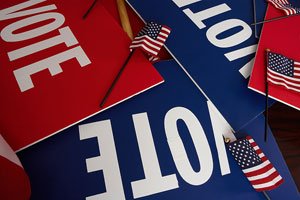Gilroy
– County officials casting about for additional revenues are
considering ballot measures that would increase sales taxes by half
a cent, but for the moment, Gilroy leaders remain cautious about
following suit as a way to buoy the city budget.
Gilroy – County officials casting about for additional revenues are considering ballot measures that would increase sales taxes by half a cent, but for the moment, Gilroy leaders remain cautious about following suit as a way to buoy the city budget.
Shoppers in Gilroy’s retail outlets already pay 8.25 cents on every dollar in purchases, which in 2004 meant $11 million for city coffers. A quarter-cent increase in sales taxes would have raised an extra $2.75-million that year – an attractive bump for officials who have decried state raiding of local funds, and a looming binding arbitration with firefighters.
But Mayor Al Pinheiro said city leaders should not rush into any proposals to increase taxes, which Gilroyans have traditionally opposed.
“It would be like anything else that you would try to do,” he said. “We would first look at all the pros and cons and check and see if that would be something the citizens would subscribe to. They’re not too keen on increasing any kind of sales tax, property tax, and so on. There has to be a compelling reason.”
Plenty of other cities in the state have already found those reasons. In the November 2004 election, 10 out of 22 cities passed general-use tax measures.
San Juan Bautista was among those that passed a “transactions and use” tax increase of three-quarters of a cent, bringing their sales tax to 8 percent.
“The main reason we did it was to try and offset the cost of public safety,” said Rick Cokley, San Juan Bautista’s interim city manager. The additional funds will defray the increasing costs of service from the San Benito County Sheriff’s Department.
The costs of public safety also have begun to strain Gilroy’s $36.5-million discretionary budget, which now faces a $1.1-million annual hit if Fire Local 2805 receives all of its demands in binding arbitration. Seventy percent of the city budget already goes toward public safety costs, and officials have started talking about a ballot measure to eliminate binding arbitration, which they say transfers the city’s finances fate to an independent arbitrator who is not accountable to taxpayers.
Councilman Craig Gartman, facing re-election in the fall, has not thrown his support behind a ballot measure ending binding arbitration, but said he would consider a measure to increase sales taxes.
“I’d be willing to put it before the voters,” said Gartman, who had a list of ideas for how the city could use the funds. “Maybe fully staffing the third fire station, doing the repairs for the sidewalks, helping to fund additional improvements to the downtown, street repair – just to name a few.”
Gartman shared the concerns of Pinheiro about the effects of higher sales taxes on business.
“You start raising you’re sales tax and you will scare off people,” Gartman acknowledged. “People could go to Morgan Hill to buy their cars instead of Gilroy. It just is (a matter of) analyzing the cost, the pain threshold for people. If in buying a car there’s a difference of a couple hundred dollars in sales tax, where do you think they’re going to go?”
A quarter cent tax increase for Gilroy would likely compete for space on the same ballot as a half-cent increase proposed by county officials, who are looking to raise about $164 million more each year. County funds could be spread among the county, cities and the Santa Clara Valley Transportation Authority, which is considering its own sales-tax measure on next year’s ballot. Were a measure to succeed, Gilroy could receive anywhere from $925,000 to $1.5 million in the first year of a higher sales tax.
Any combination of proposed increases would bring Gilroy’s sales taxes to the statutory limit of 9 percent, setting the stage for a race to the ballot box between city and county agencies.
City Administrator Jay Baksa doubted voters would push through a tax increase proposed by city officials, especially if confronted by tax proposals by the county.
“Over the years, the city has tried to do some additional revenue enhancements,” he said. “It tried back in the late ’80s to have a parcel tax that would have been used for street improvements. It went to (city) council and there was such an outcry that it never made it to the ballot.…There have been a half dozen revenue enhancements council has tried to meet the needs of the day, and every one of those has gone down…Gilroy has been traditionally a pretty conservative town when it comes to increasing any revenue for the city. My gut reaction is that it would probably meet with the same reaction as these other ones.”
With those defeats in mind, officials have instead tried to hold the line on spending while instituting a list of potential program and service cuts in the event of a budget-busting scenario.
Yet not a sales tax increase has not be ruled out entirely.
“It would be one of the items that I would consider,” Councilman Gartman said, “but where we also have to take a look at is cutting expenses. It’s much easier to cut expenses than raise revenue.”
Sales tax increase
A quarter cent sales tax increase could spell millions of dollars more for Gilroy’s budget.
Fiscal Year • Tax revenues • Extra earnings (1/4 cent increase)
2002 • $11,276,594 • $2,652,115
2003 • $10,283,131 • $2,652,115
2004 • $11,514,699 • $2,755,781
2005* • $13,111,620 • $3,277,905
*projection














